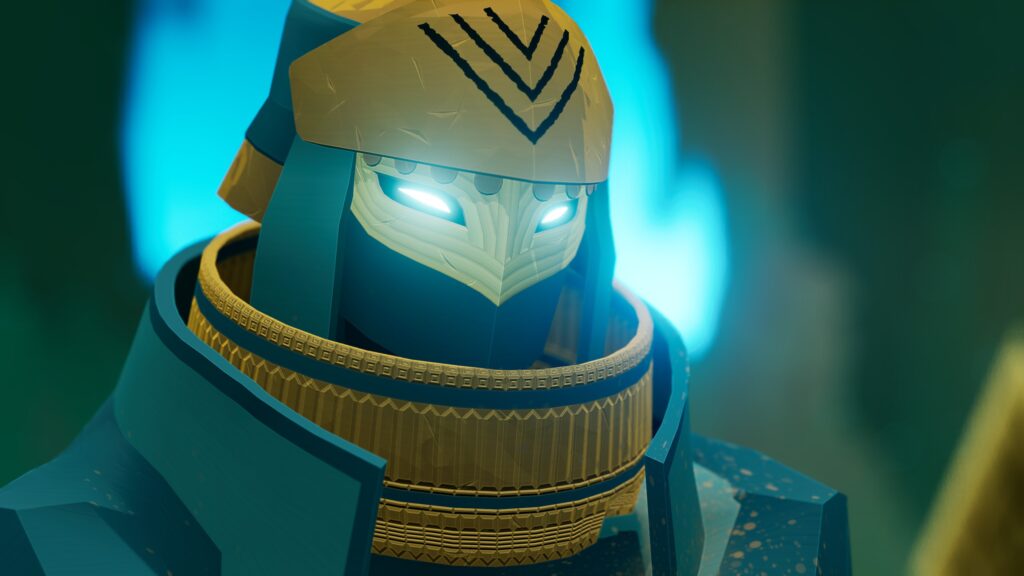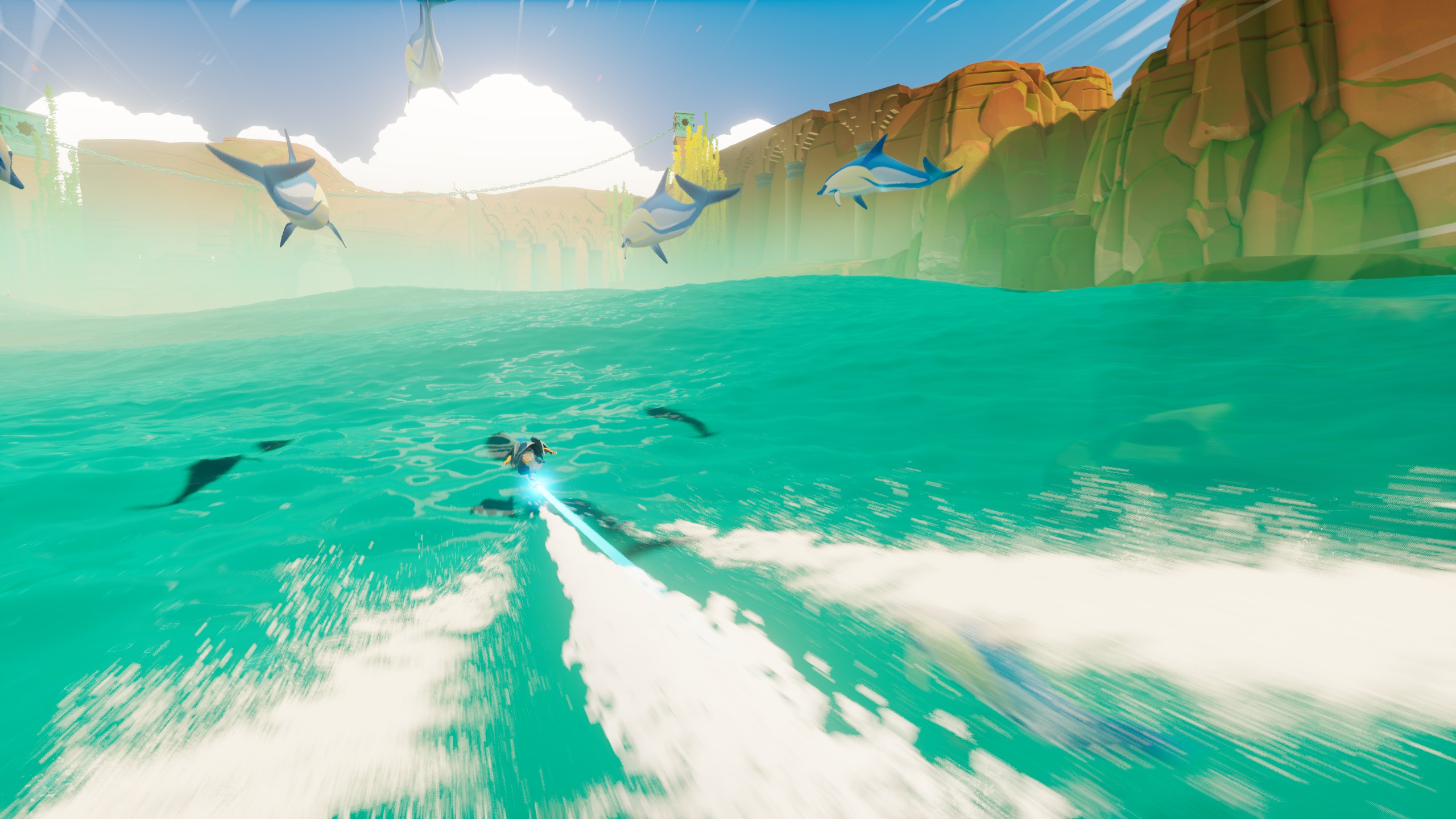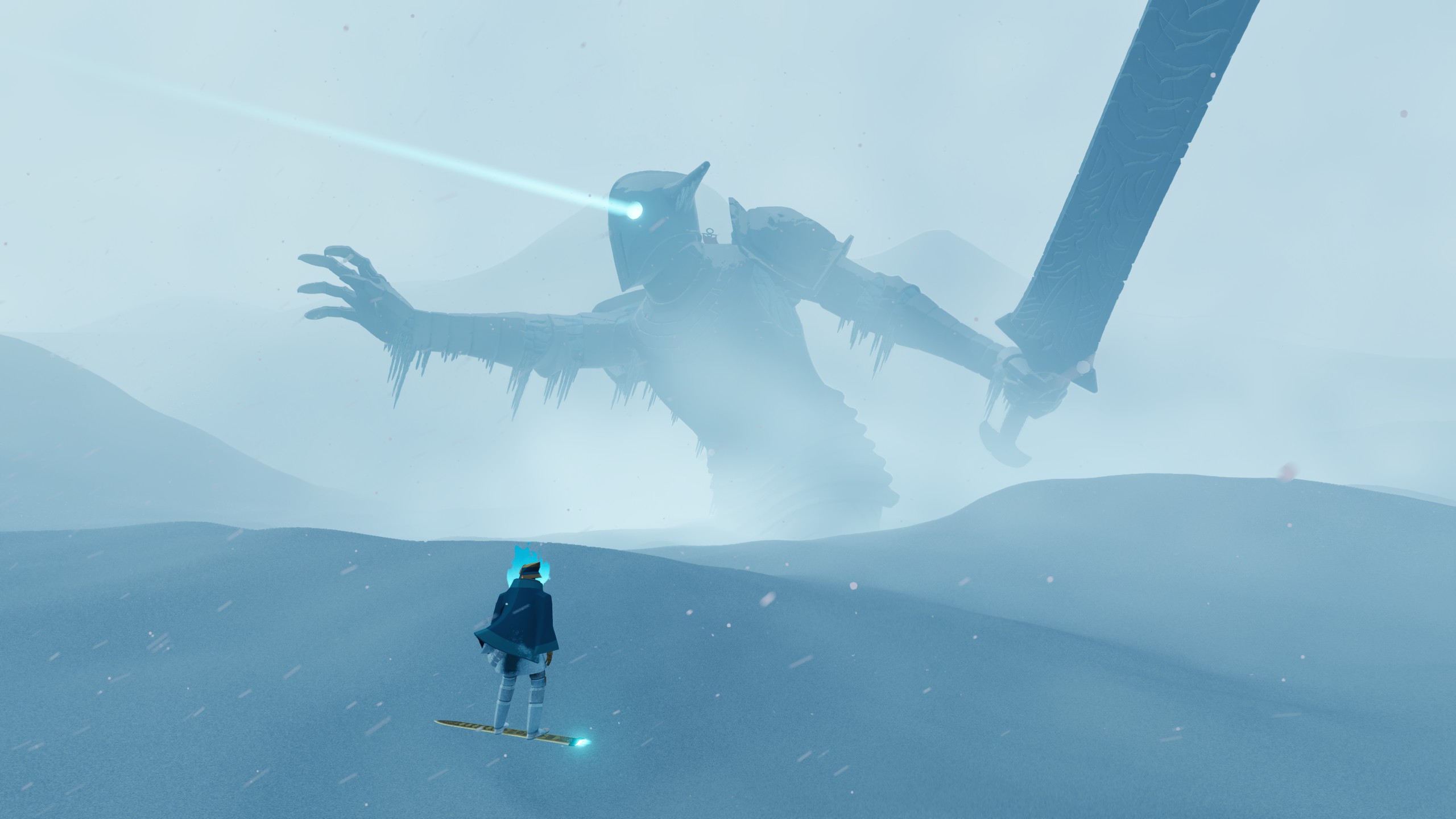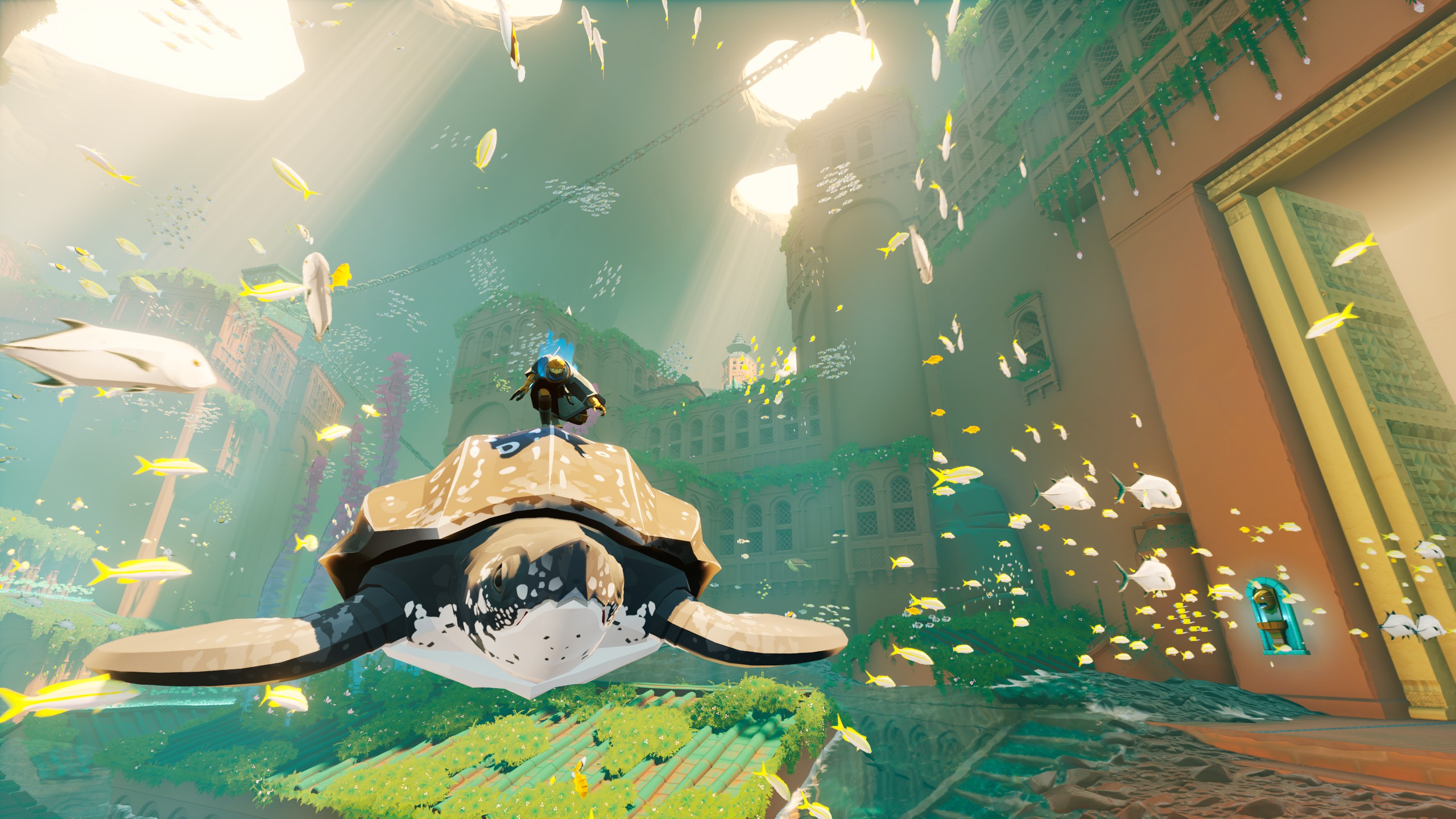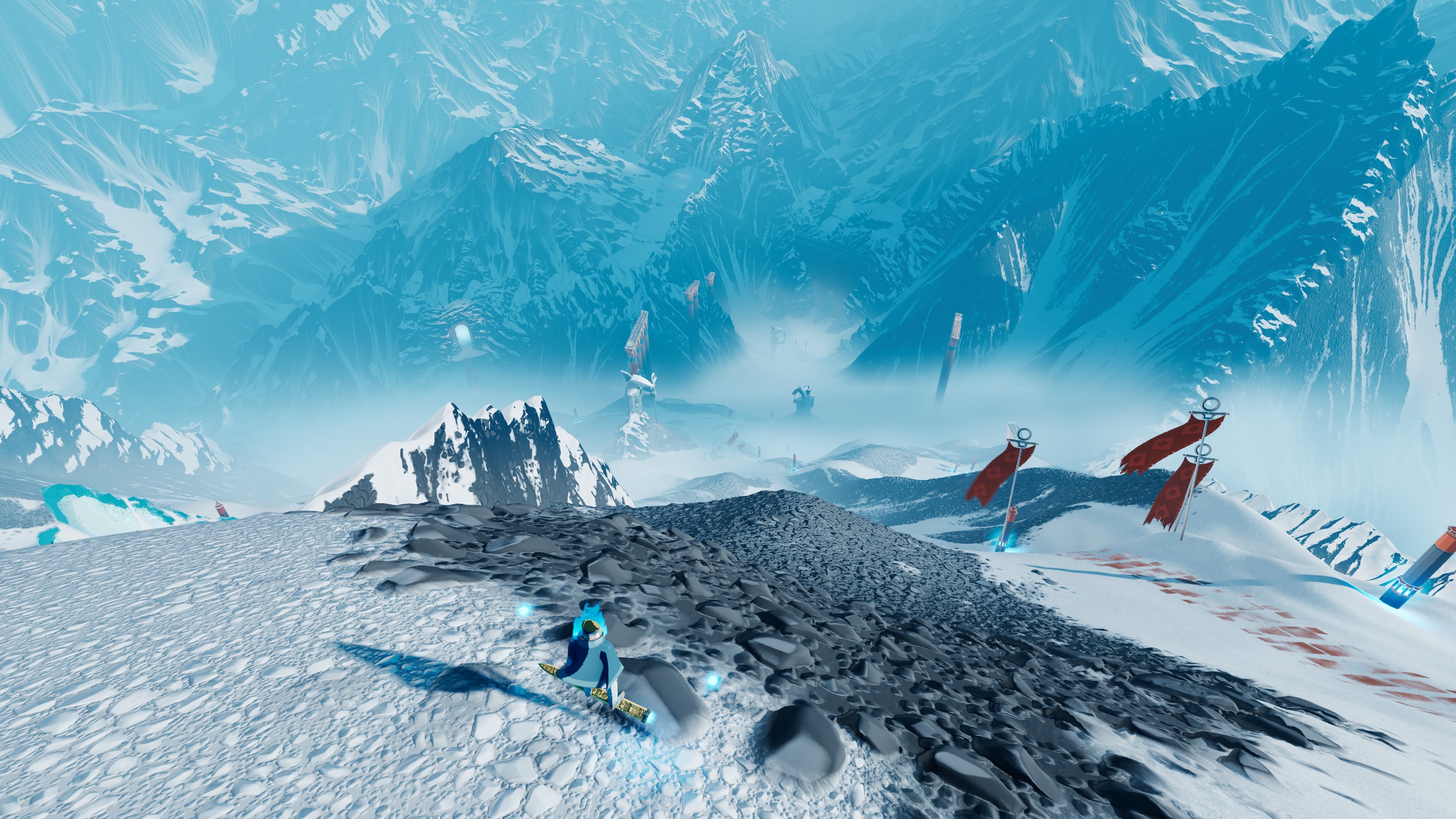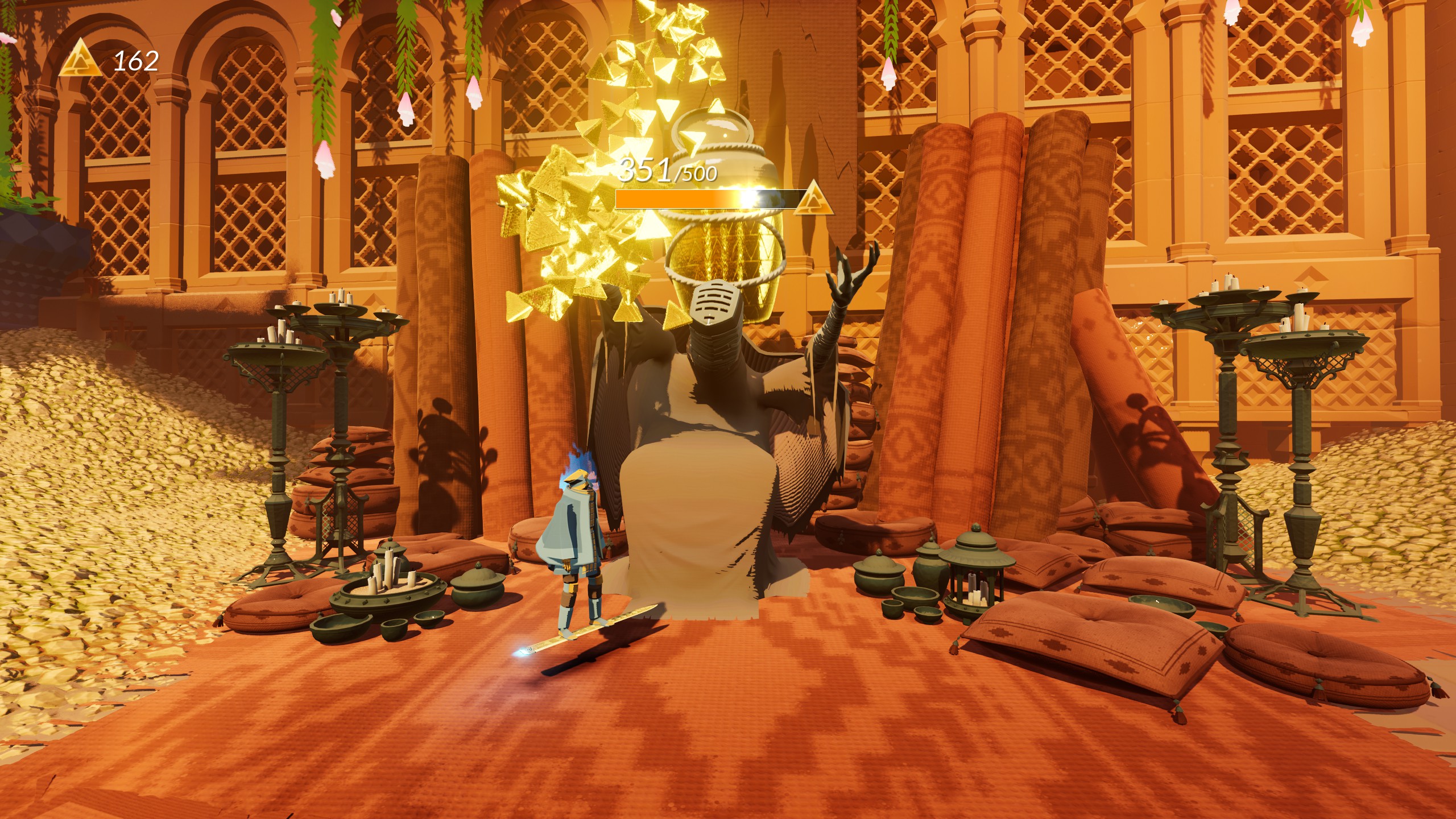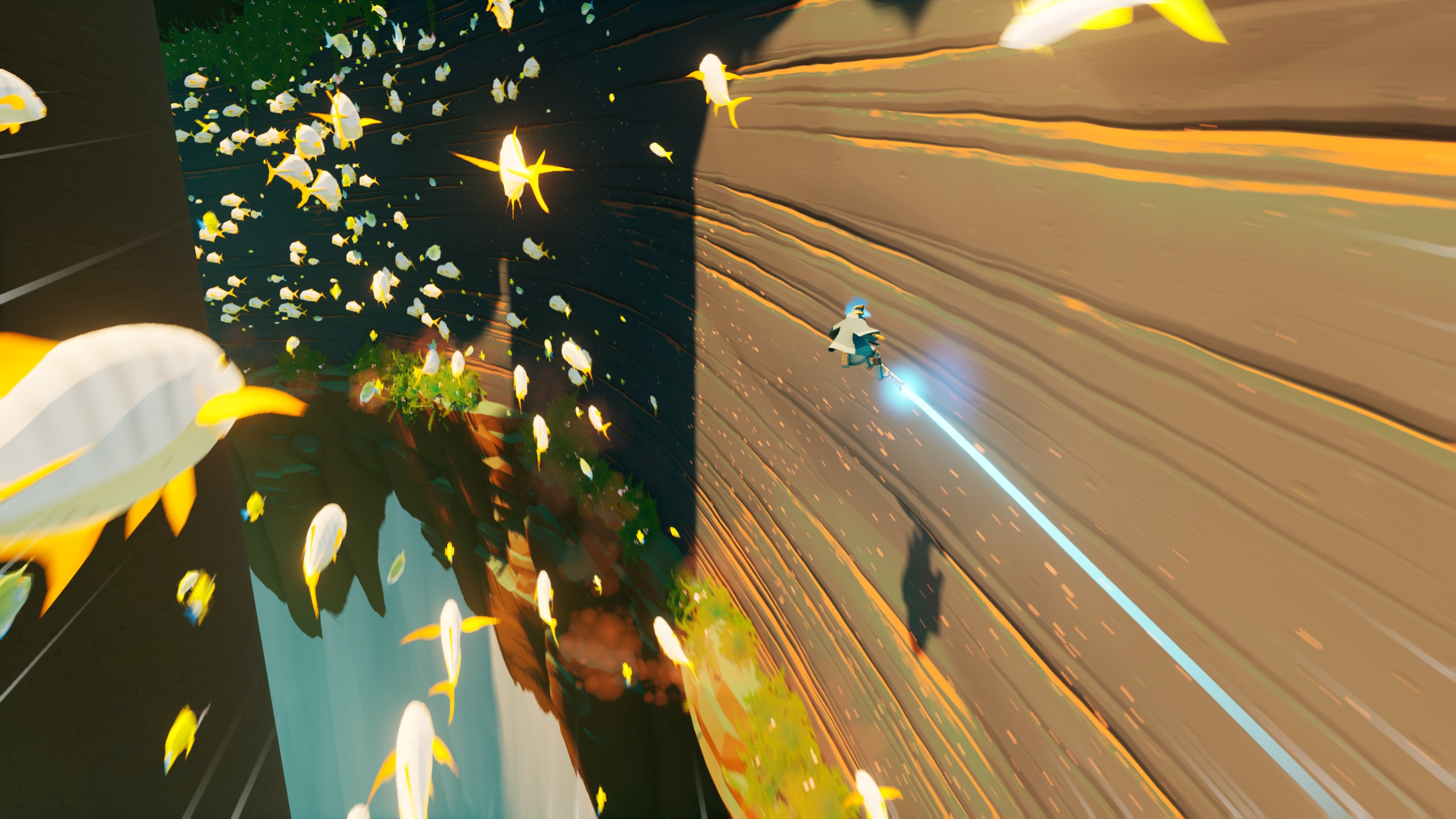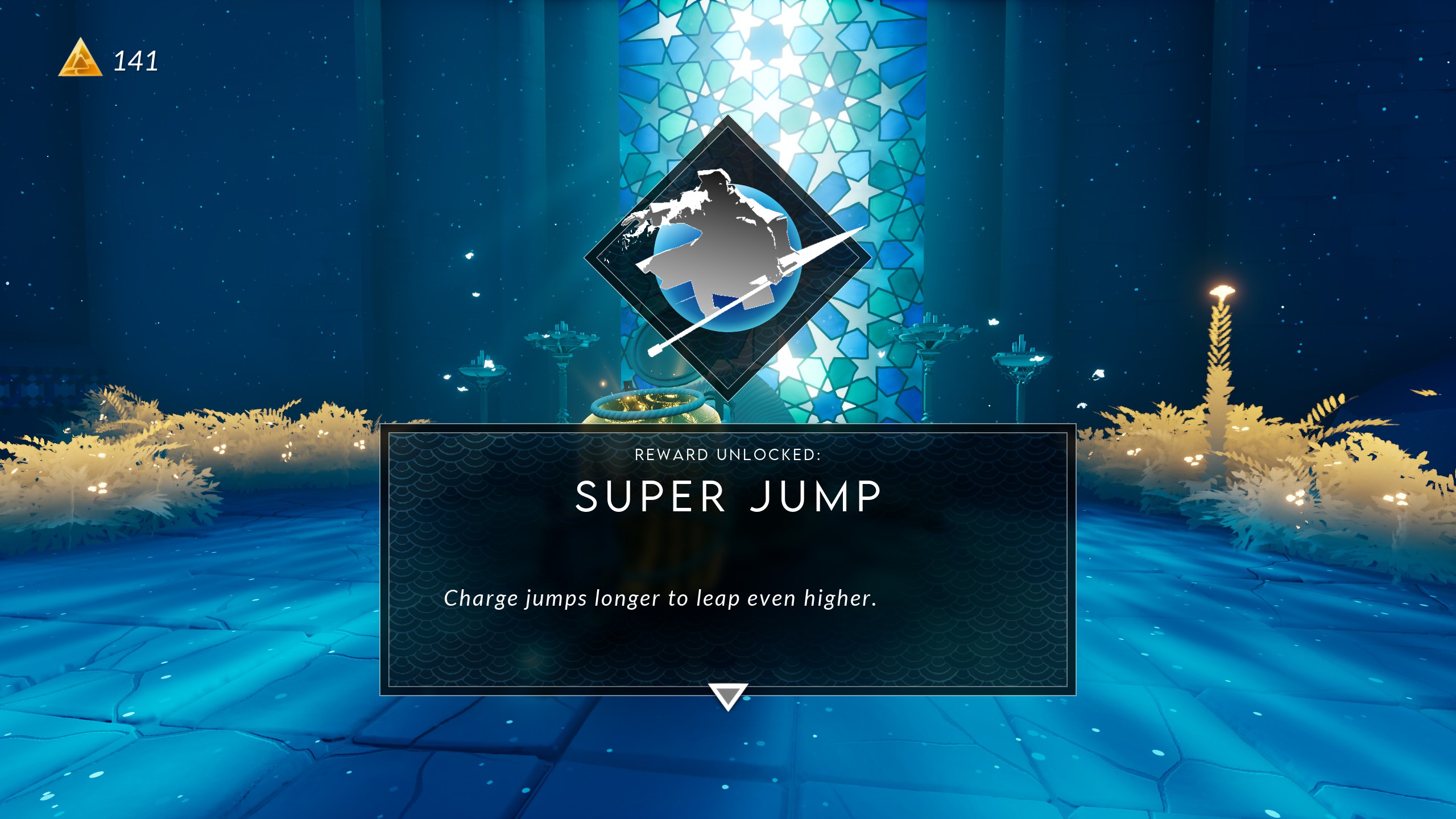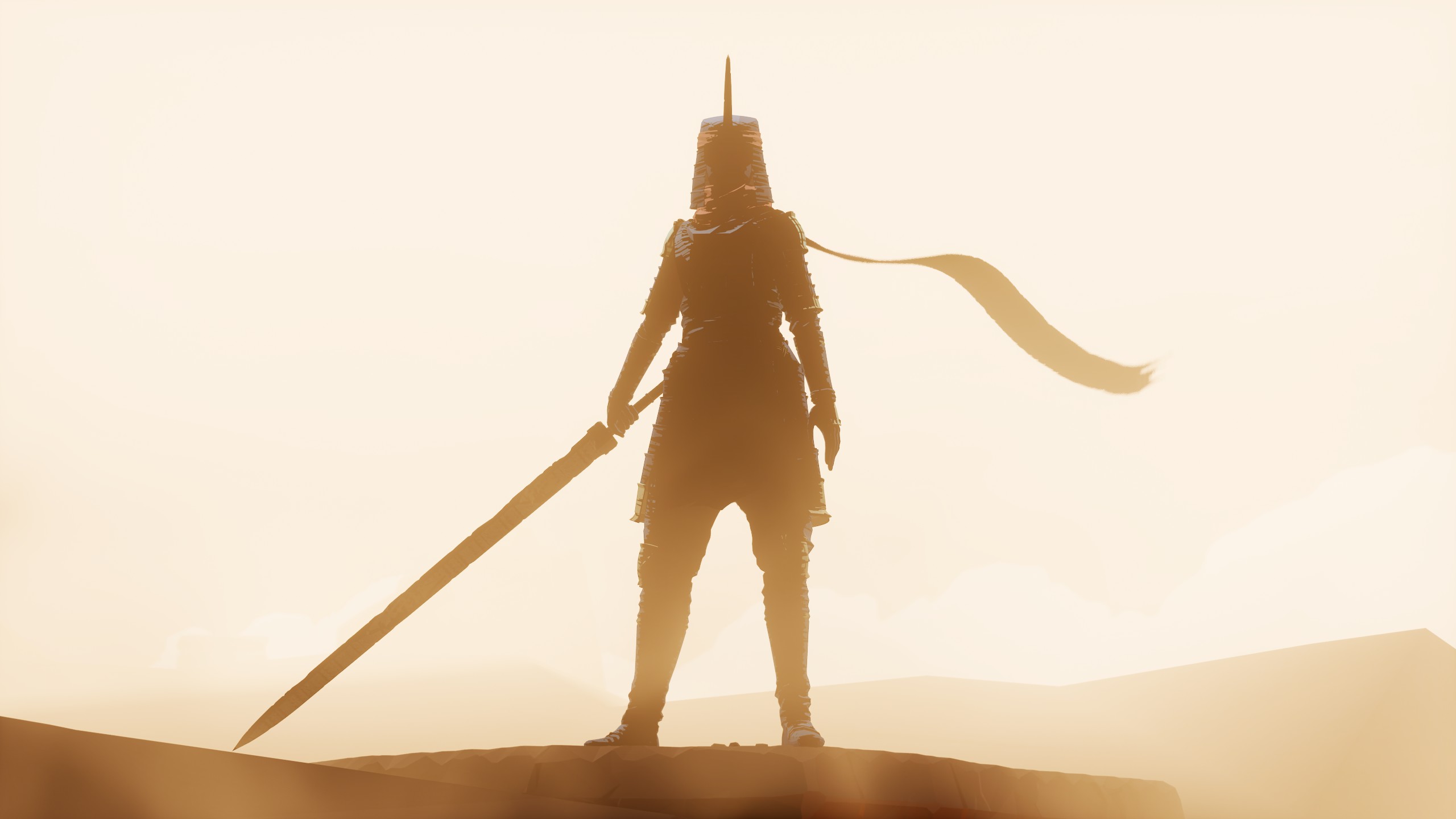Need to know
What is it? An atmospheric surfing game from the creators of The Pathless
Release date August 19, 2025
Expect to pay TBA
Developer Giant Squid
Publisher Giant Squid
Reviewed on RX 6800 XT, i5 12400F, 32GB RAM
Multiplayer No
Steam Deck Unknown
Link: Steam
The first time I played The Pathless, when it released on Apple Arcade back in 2020, I remember thinking that Giant Squid was a developer really interested in movement. In the game, you play as a hunter who travels to a sacred island, dispelling its corruption by tracking down a bunch of demon beasts, very much in the vein of Princess Mononoke. You sprint through the forest, firing arrows at targets to gain speed boosts, fly with your hawk, and even the boss battles are more chases than fights.
Still, for me at least, The Pathless always felt a bit confined and stilted movement wise; a little stop-and-start as you constantly look for targets to maintain momentum. It lacked that consistent smoothness that makes movement in a game feel amazing, particularly an atmospheric one where you want to take in surroundings. So how does Giant Squid’s new surfing adventure pay off by comparison?
Surf’s up
Long story short: Sword of the Sea’s surfing feels great. Whether it’s blazing across rolling sand dunes with a pack of dolphins in tow, zooming down a snowy slope into a ski jump, or cresting the waves and leaving a foaming trail in your wake, I really feel like Giant Squid has achieved something special here. Though linear, each of the game’s areas offer up big open spaces you can take time surfing around while also solving the puzzles needed to progress—not that any of the puzzles are particularly hard.
Plug in a DualSense (if you have one)
Having played both with and without, one thing I will say about Sword of the Sea’s surfing is that using a DualSense controller with haptics makes ALL the difference. Everything feels 100% more grounded, as you get a sense of the different textures and terrains you’re gliding over. I remember noticing the sensation of sliding on gravel and the board rattling over rooftiles—it really is night and day, especially as you move through different terrain types as you progress the game.
It’s very much an atmospheric surfing game, emphasis on the atmosphere, as you enjoy the scenery and soundtrack (both of which are stellar), and the freestyle way you can use movement to explore each space. This is further complemented with additional tricks you can purchase from vendors you’ll find, while you’ll also gain additional movement abilities through the story.
Though tricks aren’t really a big part of the game, one nice touch is that you can find little challenge-based skate parks in each area, where you’ll hit an hourglass and have to score as many points as you can during the time limit. Besides that, you mainly just pop tricks at your own speed when travelling around. It’s worth pointing out that the trick system isn’t particularly deep—you’re not going to be mashing buttons and pulling off gnarly combos here, partly because that’s not really what the game is about.
Sword of the Sea isn’t going to blow you away in terms of puzzling, narrative, or board-based tricks, but if you’re looking for a surfing experience that’s both chill and beautiful, you’re in good company. In many ways, Sword of the Sea has a similar vibe to Alto’s Odyssey, and it feels like there are a few knowing nods to that game, in both some of the desert architecture and the sidescrolling camera in certain sequences.
Sand, sea, snow (and sword)
In Sword of the Sea, you play as a mysterious warrior roused from their sleep by a single drop of water running down their sword. You then ride this sword (of the sea) into an ancient slumbering kingdom and use it to start the river of life flowing again. It’s very much one of those classic “awakening a sleeping kingdom” narratives, and while it’s nothing to write home about, it makes for some impressive spectacle.
Revitalising each area turns it into a verdant life-filled aquascape with different sea creatures.
The first area, for example, is a desert, but when you start to return the water, you realise that there’s an ocean under the sand. Revitalising each area turns it into a verdant life-filled aquascape with different sea creatures, but mechanically, it also adds new ways to traverse the area and opens the path forward. Bringing the ocean back also adds more currency to collect, giving you an opportunity to re-explore each area and make use of the new routes of traversal—a great little touch that turns each area into a kind of skatepark for your swordboard.
There are some fantastic and joyful sequences as you travel through sand, sea, and snow, reawakening the kingdom and progressing through each area—though I won’t spoil any of them here. You might find yourself a little bored by its simple and somewhat repetitive puzzles at times—most of them involve finding and activating three things—but Sword of the Sea’s real strength lies in taking you from spectacle to spectacle, and for me at least, that was enough to sustain the experience and make it enjoyable, even when I found other elements a little lackluster.
Short but sweet
This might not be so strange to those who played The Pathless, but it’s important to note that Sword of the Sea is also quite short. I completed the main game in 3.8 hours and I wasn’t by any means rushing, since I searched for collectibles in all but the final area, and purchased all but one of the tricks. Finishing the game unlocks new game plus, granting you a speed-o-meter and a trick display for subsequent runs, if you’re the kind of person who’ll want to master surfing or try to speedrun.
For my part, at least, I’m glad the game isn’t any longer because I don’t think the simplistic puzzle design would’ve sustained it. That’s kind of an indictment of the puzzles, really—there’s definitely a version of this game with more complex and satisfying puzzles or even puzzles that involve tricks or slightly more complicated movement-based elements. That said, looking at The Pathless as well, I don’t think that’s the kind of game Giant Squid wants to make. It’s ultimately up to you to decide whether you’re happy paying the price for this much content time-wise.
It’s somewhat refreshing to play a short game that doesn’t overstay its welcome.
I did walk away satisfied with the experience. While I don’t think I’ll go back to it, Sword of the Sea is an extremely pleasant way to spend an afternoon and it’s somewhat refreshing to play a short game that doesn’t overstay its welcome. It’s a short but sweet atmospheric experience with excellent surfing and plenty of moments that left me open-mouthed in terms of spectacle and beauty. Sword of the Sea also feels like an evolution of what Giant Squid was attempting movement-wise with The Pathless but I think ultimately this game is far more successful.

